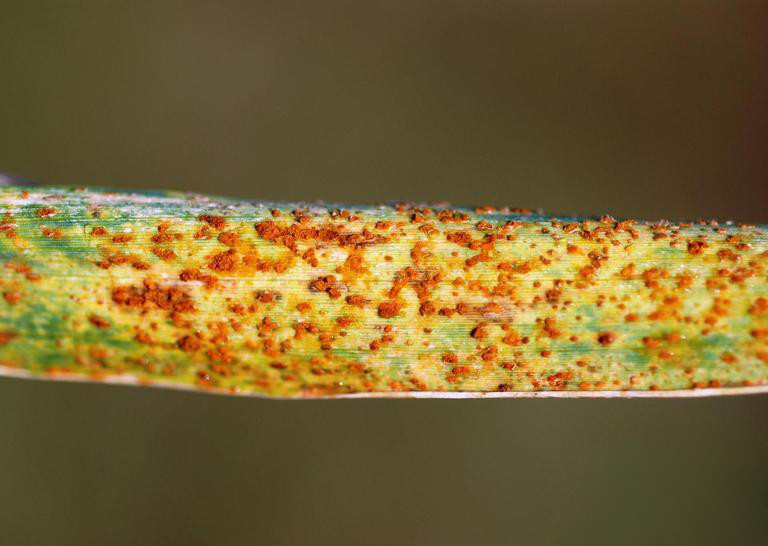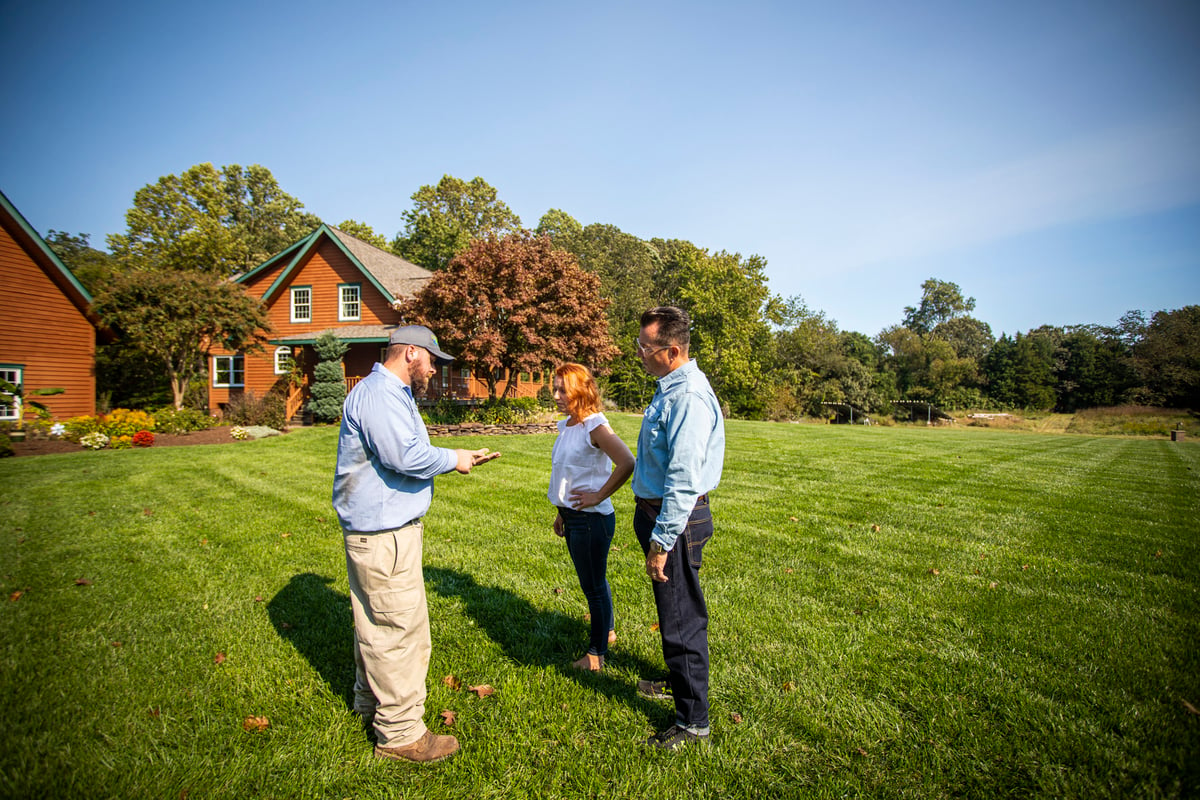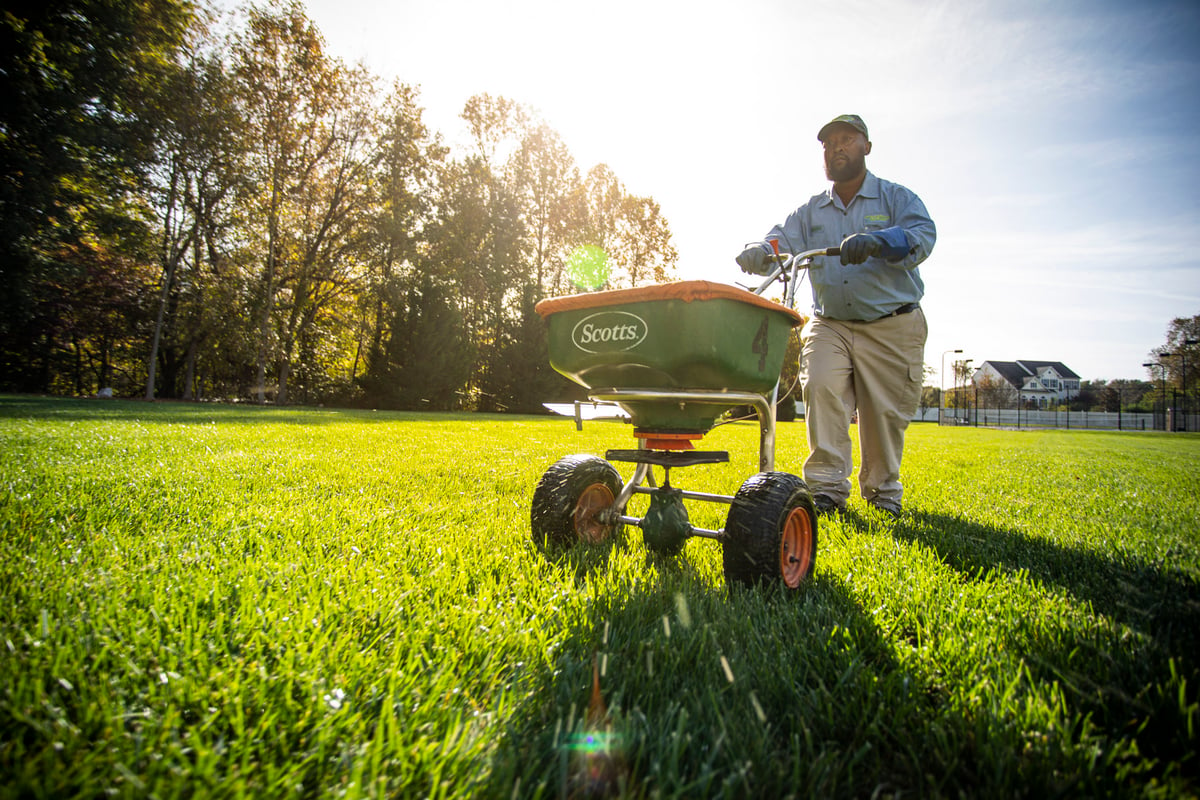All About Rust Lawn Disease in Maryland
When you have a Maryland home you are proud of, it’s usually surrounded by a lush, green lawn.
A strange, off-color lawn certainly isn’t going to make you happy or boost your curb appeal.
Spots, ugly areas, discoloration, and a lawn that just doesn’t look right is not something you want tainting your home’s front-facing appearance.
You want to feel positive pulling into your driveway each day and enjoy the outdoors without shying away from talking to your neighbors because you’re embarrassed of your grass.
One of the things that might lead to a strange and tinted look might be a lawn disease called rust.
If you notice a rusty-looking lawn, we can help. Let’s talk about rust lawn disease so you can better understand what causes it and how to keep it out of your grass.
Rust Lawn Disease in Maryland
When you hear the word rust, you might think of the rust that can develop on your car or on metal.
Use This Tool to Compare Your Local Lawn Care Companies
The type of grass rust in your lawn is brought on by a common fungus. And the reason they call it rust is due to the orange-yellow, rusty appearance that it gives your grass blades.
What Does Grass Rust Look Like?
When you first spot lawn rust disease on your grass, you might see those orange or yellowish-orange spots on individual grass blades.
 These spots will grow more and more as the disease progresses. Eventually, those spots will rupture and release a rusty powder that will stick to anything that passes by like your shoes or your dog’s paws.
These spots will grow more and more as the disease progresses. Eventually, those spots will rupture and release a rusty powder that will stick to anything that passes by like your shoes or your dog’s paws.
Lawn Rust Disease Causes
You will most likely spot rust lawn disease during mild, wet weather when spring arrives.
The disease will keep progressing through spring, summer, and fall when you have sunny, dry areas followed by mild, humid moments.
 Rust will thrive in moderate temperatures that range from 50 to 60 degrees Fahrenheit. It also thrives during long evenings of moisture.
Rust will thrive in moderate temperatures that range from 50 to 60 degrees Fahrenheit. It also thrives during long evenings of moisture.
A stressed out lawn is also more susceptible to grass rust than a healthy lawn. This includes areas of compaction or excess shade.
How to Treat Lawn Rust Disease
To prevent rust lawn disease, you need thick, healthy grass.
To do this, follow proper lawn care practices to keep your lawn from experiencing stress.
Start with mowing correctly. You want to mow to a 3- to 4-inch height. This means mowing weekly during the growing season to remove no more than one-third of the grass at any single time. Using sharp mower blades ensures you don’t tear your grass as well.
Proper watering is also an important step. If you water too much in the evening, your grass may not be able to dry out before nightfall. This can encourage disease.
 Fertilizing can also help your lawn. A soil test can reveal what your lawn is lacking, and fertilizing based on this insight can prevent nutrient deficiencies.
Fertilizing can also help your lawn. A soil test can reveal what your lawn is lacking, and fertilizing based on this insight can prevent nutrient deficiencies.
In autumn, aerating your lawn, followed by overseeding, can help ensure compaction doesn’t build up and your lawn continues to thicken in healthy soil, warding off disease.
In addition to these cultural practices, you can also trim tree branches a bit in some areas above your lawn to minimize excess shade to help get rid of rust or prevent it from reappearing.
You Can Have a Lawn Without Grass Rust in Central and Southern Maryland
With lawn rust disease in Central and Southern Maryland, the most crucial part of controlling it is maintaining adequate nutrition levels in your lawn with proper fertilization. This can lessen the disease impact and even help your lawn recover faster.
As weather conditions improve, rust disease will continue to disappear as your lawn gets stronger and stress is minimized while you practice proper cultural and care practices.
Taking good care of your lawn can always help with rust lawn disease in Maryland.
If you’re still worried about weird spots you’re seeing in your grass or a rusty, powdery substance that shows up on your shoes as you walk across your lawn, give Natural Green Systems a call. We have the knowledge about how lawn diseases work and can help you quickly identify lawn problems, treat them, recommend treatments, and help you get your green lawn back.
Get excited to go outside and enjoy your disease-free lawn. Give us a call today for a free consultation, and we’ll bring our proven lawn care experience and create a custom plan for your Central and Southern Maryland yard.
Image Source: rust on grass
When you have a Maryland home you are proud of, it’s usually surrounded by a lush, green lawn.
A strange, off-color lawn certainly isn’t going to make you happy or boost your curb appeal.
Spots, ugly areas, discoloration, and a lawn that just doesn’t look right is not something you want tainting your home’s front-facing appearance.
You want to feel positive pulling into your driveway each day and enjoy the outdoors without shying away from talking to your neighbors because you’re embarrassed of your grass.
One of the things that might lead to a strange and tinted look might be a lawn disease called rust.
If you notice a rusty-looking lawn, we can help. Let’s talk about rust lawn disease so you can better understand what causes it and how to keep it out of your grass.
Rust Lawn Disease in Maryland
When you hear the word rust, you might think of the rust that can develop on your car or on metal.
Use This Tool to Compare Your Local Lawn Care Companies
The type of grass rust in your lawn is brought on by a common fungus. And the reason they call it rust is due to the orange-yellow, rusty appearance that it gives your grass blades.
What Does Grass Rust Look Like?
When you first spot lawn rust disease on your grass, you might see those orange or yellowish-orange spots on individual grass blades.
 These spots will grow more and more as the disease progresses. Eventually, those spots will rupture and release a rusty powder that will stick to anything that passes by like your shoes or your dog’s paws.
These spots will grow more and more as the disease progresses. Eventually, those spots will rupture and release a rusty powder that will stick to anything that passes by like your shoes or your dog’s paws.
Lawn Rust Disease Causes
You will most likely spot rust lawn disease during mild, wet weather when spring arrives.
The disease will keep progressing through spring, summer, and fall when you have sunny, dry areas followed by mild, humid moments.
 Rust will thrive in moderate temperatures that range from 50 to 60 degrees Fahrenheit. It also thrives during long evenings of moisture.
Rust will thrive in moderate temperatures that range from 50 to 60 degrees Fahrenheit. It also thrives during long evenings of moisture.
A stressed out lawn is also more susceptible to grass rust than a healthy lawn. This includes areas of compaction or excess shade.
How to Treat Lawn Rust Disease
To prevent rust lawn disease, you need thick, healthy grass.
To do this, follow proper lawn care practices to keep your lawn from experiencing stress.
Start with mowing correctly. You want to mow to a 3- to 4-inch height. This means mowing weekly during the growing season to remove no more than one-third of the grass at any single time. Using sharp mower blades ensures you don’t tear your grass as well.
Proper watering is also an important step. If you water too much in the evening, your grass may not be able to dry out before nightfall. This can encourage disease.
 Fertilizing can also help your lawn. A soil test can reveal what your lawn is lacking, and fertilizing based on this insight can prevent nutrient deficiencies.
Fertilizing can also help your lawn. A soil test can reveal what your lawn is lacking, and fertilizing based on this insight can prevent nutrient deficiencies.
In autumn, aerating your lawn, followed by overseeding, can help ensure compaction doesn’t build up and your lawn continues to thicken in healthy soil, warding off disease.
In addition to these cultural practices, you can also trim tree branches a bit in some areas above your lawn to minimize excess shade to help get rid of rust or prevent it from reappearing.
You Can Have a Lawn Without Grass Rust in Central and Southern Maryland
With lawn rust disease in Central and Southern Maryland, the most crucial part of controlling it is maintaining adequate nutrition levels in your lawn with proper fertilization. This can lessen the disease impact and even help your lawn recover faster.
As weather conditions improve, rust disease will continue to disappear as your lawn gets stronger and stress is minimized while you practice proper cultural and care practices.
Taking good care of your lawn can always help with rust lawn disease in Maryland.
If you’re still worried about weird spots you’re seeing in your grass or a rusty, powdery substance that shows up on your shoes as you walk across your lawn, give Natural Green Systems a call. We have the knowledge about how lawn diseases work and can help you quickly identify lawn problems, treat them, recommend treatments, and help you get your green lawn back.
Get excited to go outside and enjoy your disease-free lawn. Give us a call today for a free consultation, and we’ll bring our proven lawn care experience and create a custom plan for your Central and Southern Maryland yard.
Image Source: rust on grass
Share This
Topics: Lawn Care


